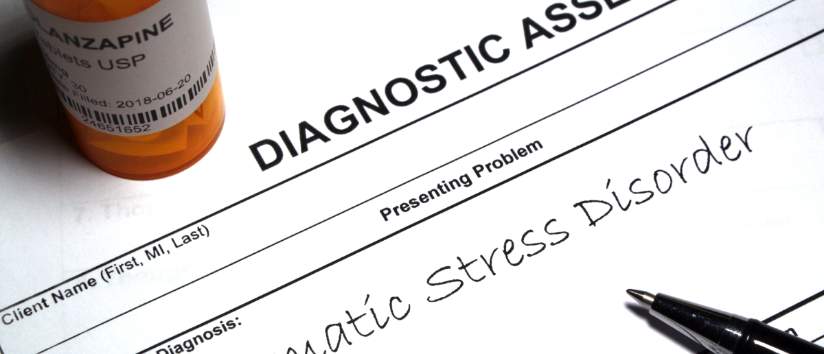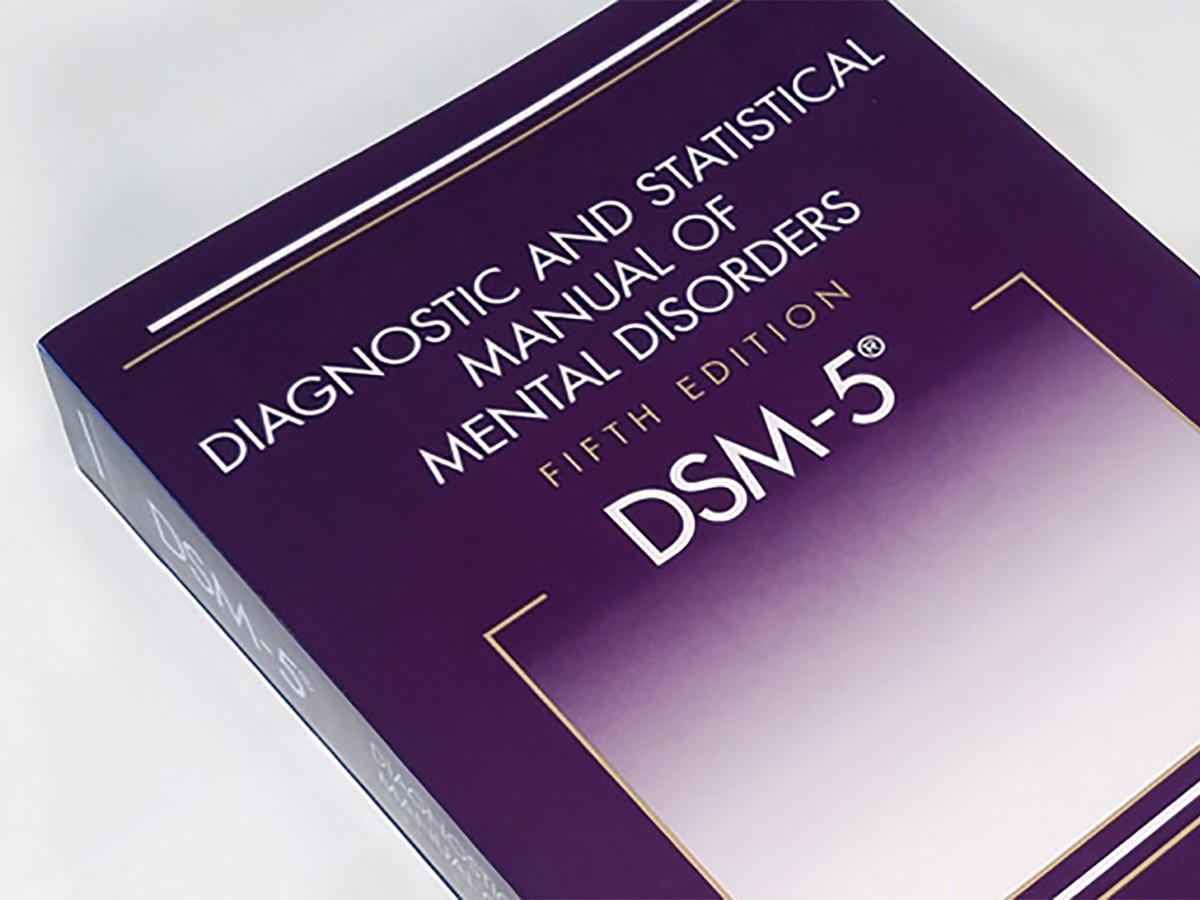What Book Is Used to Describe and Categorize Mental Disorders
The Diagnostic and Statistical Manual of Mental Disorders Fifth Edition DSM-5 the wellspring of official information about different types of mental illness defines five different types of mental illness to help people better understand what mental illness is what it does and how it affects human beings American Psychiatric Association 2013. Kraepelins classification system would later become the basis for the modern Diagnostic and Statistical Manual of Mental Disorders series DSM.
It now lists 157 mental disorders with symptoms criteria risk.

. Axis III represents an individuals physical disorders or general medical conditions. The use of medications in the treatment of psychological disorders such as schizophrenia and major depressive disorder gained significant prominence over the last half of the 20th century. While not a comprehensive list of every mental disorder the following list includes some of the major categories of disorders described in the fifth edition of the Diagnostic and Statistical.
The American Psychiatric Association published the first version of the DSM in 1952. There are currently two widely established systems for classifying mental disorders. Axes III-V are used to record additional information about the client.
The DSM-5 is a tool and reference guide for mental health clinicians to diagnose classify and identify mental health conditions. Professionals is the DSM-5. The first edition of the DSM was published in 1952 and has undergone numerous revisions.
DSM-5 ICD-11 diagnosis classification. Categories have been established with an eye to agreement with the layout of the Diagnostic and Statistical Manual of Mental Disorders Fourth Edition DSM-IV of the American Psychiatric Association APA 12 which is well known in many countries. The diagnosis and classification of psychological disorders is essential in studying and treating psychopathology.
If the disorder is a personality disorder or mental retardation it is recorded on Axis II. Chapter V of the tenth International Classification. From the Diagnostic and Statistical Manual of Mental Disorders Fifth Edition DSM-5 and the International Classification of Diseases Ninth Revision ICD-9-CM.
Most types of disorders are recorded on Axis I which represents clinical syndromes. Your Guide to DSM-5 or the Diagnostic and Statistical Manual of Mental Disorders both available from APA Publishing. The government decided that it needed to collect data on the prevalence of mental illness.
The current edition of the DSM the fifth revision DSM-5 1 was published in May 2013. The DSM-5 the Diagnostic and Statistical Manual of Mental Disorders Fifth Edition is a tome on mental illness published by the American Psychiatric Association APA. The primary goals of.
Mental disorders are patterns of behavioral or psychological symptoms that impact multiple areas of life. The Diagnostic and Statistical Manual of Mental Disorders DSM provides the standard language by which clinicians researchers and public health officials in the United States communicate about mental disorders. DSM refers to the Diagnostic and Statistical Manual of Mental Disorders.
These disorders create distress for the person experiencing the symptoms. The ICD-10 classification of mental and behavioral disorders preserves categories parallel to those used in DSM-IV although the. Its primary function is to categorize psychiatric pathologies for proper diagnosis which helps to orient.
The classification system used by most US. The DSM-5 contains broad categories of mental illness and within those categories all known mental disorders. Advances in research and drug development led to the creation of more effective drugs which in turn spurred an increase in their use.
The fourth edition of the Diagnostic and Statistical Manual of Mental Disorders DSM-IV is the most widely used guide in the world to classify psychiatric disorders. Psychologists and psychiatrists use a reference book called the Diagnostic and Statistical Manual of Mental DisordersDSM to diagnose psychological disorders. THE DIAGNOSTIC AND STATISTICAL MANUAL OF MENTAL DISORDERS DSM Although a number of classification systems have been developed over time the one that is used by most mental health professionals in the United States is the Diagnostic and Statistical Manual of Mental Disorders DSM-5 published by the American Psychiatric Association 2013.
For more complete descriptions please consult Understanding Mental Disorders. Diagnostic and Statistical Manual of Mental Disorders IV a book published by the American Psychiatric Association that classifies the symptoms of mental disorders into formal categories attention deficit hyperactivity disorder. There are currently two widely established systems for classifying mental disordersChapter V of the International Classification of Diseases ICD-10 produced by the World Health Organization WHO and the Diagnostic and Statistical Manual of Mental Disorders DSM-IV produced by the American Psychiatric Association APA.
Its used for the official diagnosis and classification of mental disorders. The 5th and most recent edition the DSM-5 was published in 2013. It has almost unanimous acceptance as the authority on mental health disorders.
The Diagnostic and Statistical Manual of Mental Disorders Fifth Edition shortened to DSM-5 is the guide used by clinicians to diagnose mental health conditions. In news releases when reading psychology information only and when learning about mental disorders its likely that youve seen the DSM referenced on multiple occasions. DSM-IV is the fourth edition of the Diagnostic and Statistical Manual of Mental Disorders.
Addiction is a chronic brain disease that causes compulsive substance use despite harmful consequences. The Diagnostic and Statistical Manual of Mental Disorders DSM is a guidebook widely used by mental health professionalsespecially those in the. Alcohol and Substance Use Disorders.
The classification of mental disorders is also known as psychiatric nosology or psychiatric taxonomyIt represents a key aspect of psychiatry and other mental health professions and is an important issue for people who may be diagnosed. In 1840 the term idiocyinsanity was used to describe certain individuals in the census. Its published by a professional body called the American Psychiatric Association APA and updated as new research emerges.

Basic Conversation Visuals And Scripts For Speech Therapy Speech Therapy Materials Speech Therapy Activities School Speech Therapy

Eeg Mbti Mbti Brain Mapping Psychology

Reading Comprehension Strategies With Technology Classroom Freebies Reading Comprehension Reading Comprehension Strategies Classroom Freebies

Don T Judge Anyone Reminder Quotes Character Quotes I Love My Daughter

Types Of Conflict Worksheet 4 Answers Types Of Conflict Paragraph Writing Topics Writing Topics

Free Executive Functioning Printables Includes Worksheets And Activities For Executive Functioning Executive Functioning Skills Executive Functioning Disorder

Brain Map Showing Cognitive Activities Brain Mapping Brain Facts Cognitive Activities

Introduction To The Classification Of Mental Disorders Mht

Compare And Contrast Cards By The Speech Buzz Get This Set Of Cards At My Tpt Store Thes Compare And Contrast Speech Therapy Activities Speech Therapy Games

How To Teach Your High Schooler Organization Skills Teaching Organization Study Skills Teaching

Chapter Four Learning Objectives Payge Rivord Learning Design Problem Based Learning Learning Objectives

The Kind Of Loser You Attract Based On Your Zodiac Sign Mindfulness Journal Symbols Subconscious

Semantic Feature Analysis Chart Vocabulary Programs Vocabulary Strategies Word Sorts

Teachthought On Twitter Blooms Taxonomy Verbs Critical Thinking Blooms Taxonomy

Pin On Fms Cfs Health Information

Diagnostic And Statistical Manual Of Mental Disorders And Ocd Ocd Uk




Comments
Post a Comment